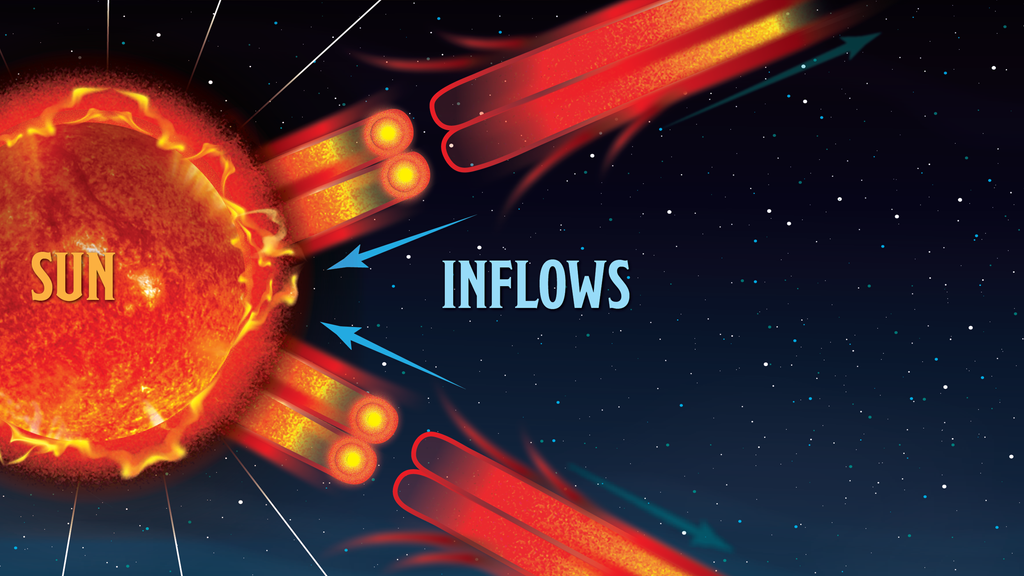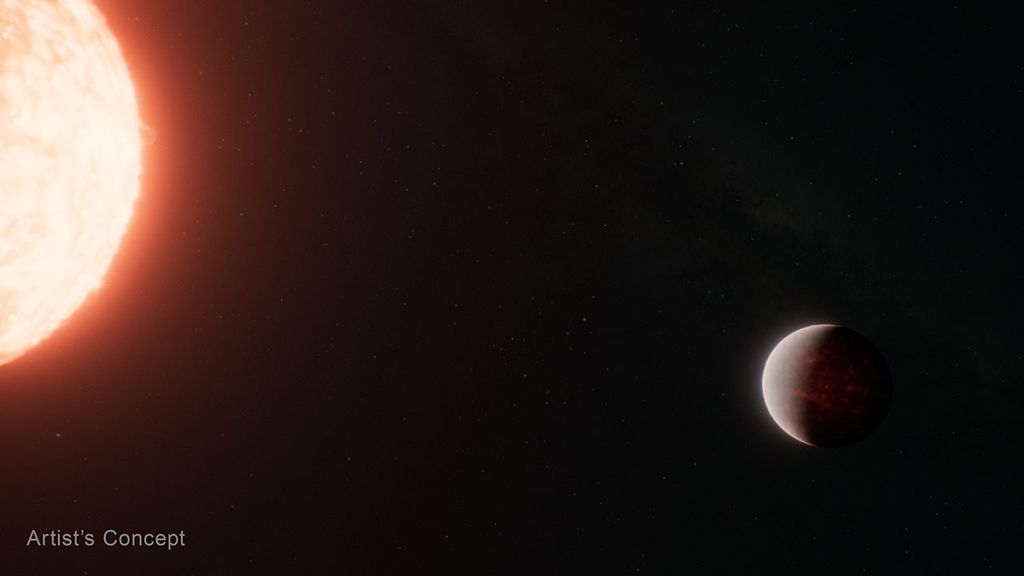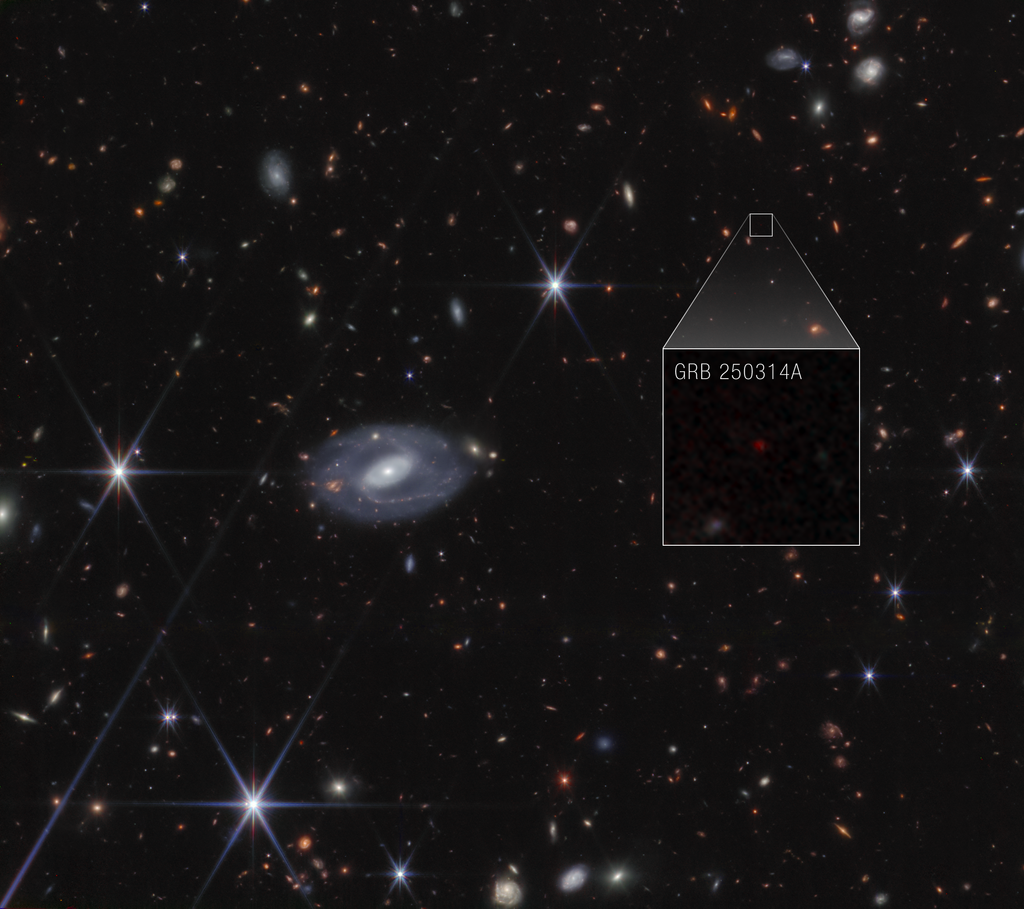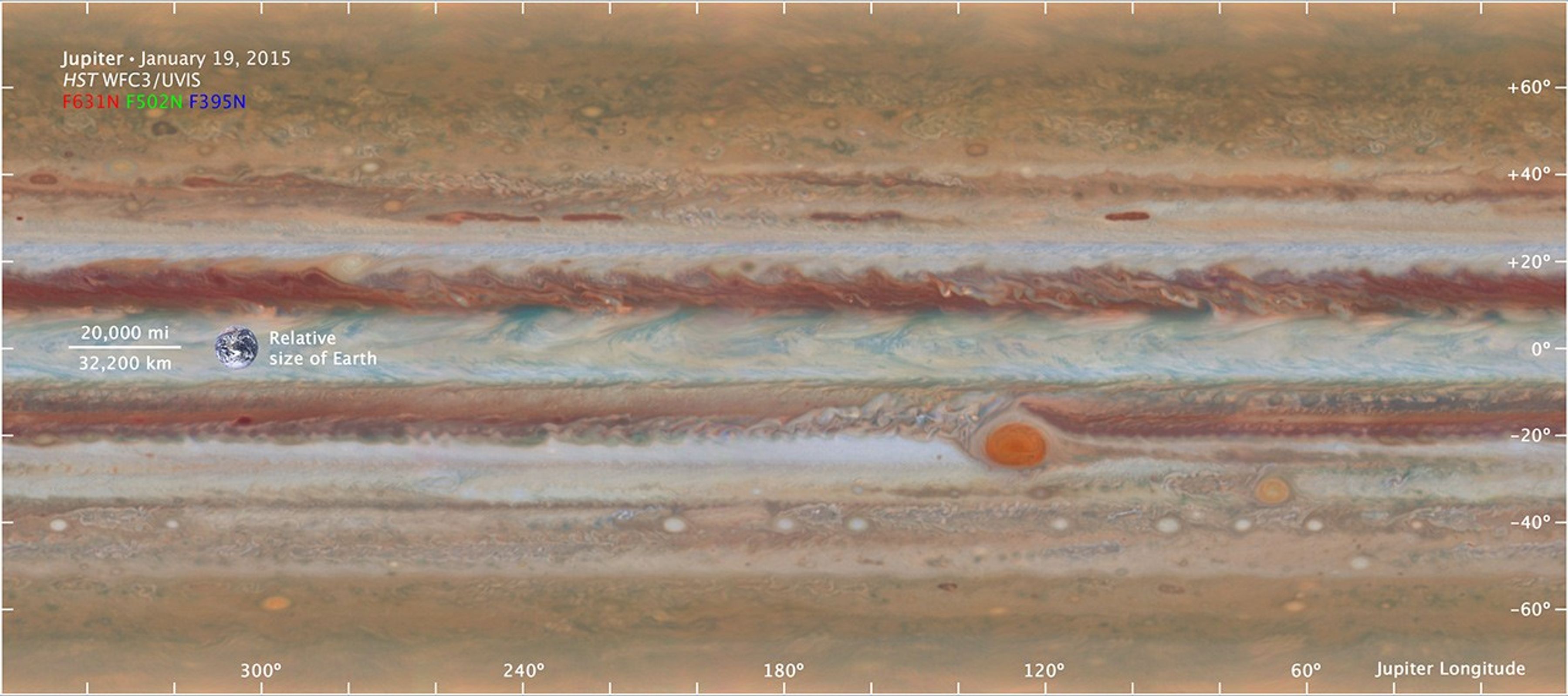1 min read
Jupiter Global Maps from Hubble’s OPAL Program

About the Object
- DistanceDistanceThe physical distance from Earth to the astronomical object. Distances within our solar system are usually measured in Astronomical Units (AU). Distances between stars are usually measured in light-years. Interstellar distances can also be measured in parsecs.The semi-major axis of Jupiter's orbit about the sun is 5.2 astronomical units (483 million miles or 778 million km).
- DimensionsDimensionsThe physical size of the object or the apparent angle it subtends on the sky.The planet has a diameter of roughly 88,789 miles (142,984 km) at the equator.
About the Data
- Data DescriptionData DescriptionProposal: A description of the observations, their scientific justification, and the links to the data available in the science archive.
Science Team: The astronomers who planned the observations and analyzed the data. "PI" refers to the Principal Investigator.The image was created from Hubble data from proposal 13937: A. Simon (GSFC), M. Wong (UC Berkeley), and G. Orton (JPL-Caltech). - InstrumentInstrumentThe science instrument used to produce the data.HST>WFC3/UVIS
- Exposure DatesExposure DatesThe date(s) that the telescope made its observations and the total exposure time.January 19, 2015
- FiltersFiltersThe camera filters that were used in the science observations.395 nm, 502 nm, and 631 nm
- Object NameObject NameA name or catalog number that astronomers use to identify an astronomical object.Jupiter
- Object DescriptionObject DescriptionThe type of astronomical object.Planet
- Release DateOctober 13, 2015
- Science ReleaseHubble’s Planetary Portrait Captures New Changes in Jupiter’s Great Red Spot
- Credit

These images are a composite of separate exposures acquired by the WFC3 instrument on the Hubble Space Telescope. Several filters were used to sample narrow wavelength ranges. The color results from assigning different hues (colors) to each monochromatic (grayscale) image associated with an individual filter. In this case, the assigned colors are: Blue: F395N (395 nm) Green: F502N (502 nm) Red: F631N (631 nm)
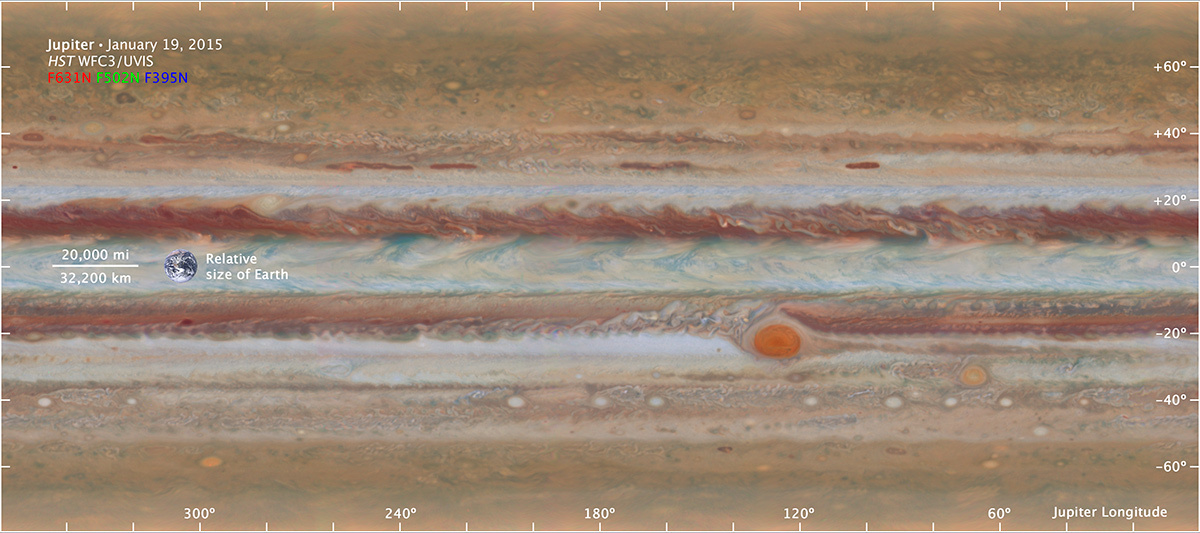
Related Images & Videos

Jupiter Global Map from Hubble OPAL Data (Animated Sequence 1)
Scientists have produced new maps of Jupiter using the Wide Field Camera 3 on NASA's Hubble Space Telescope. The data in the Jupiter map shown here were taken during Hubble Outer Planet Atmospheres Legacy program observations of Jupiter on Jan. 19, 2015, from 2:00 UT to 12:30...
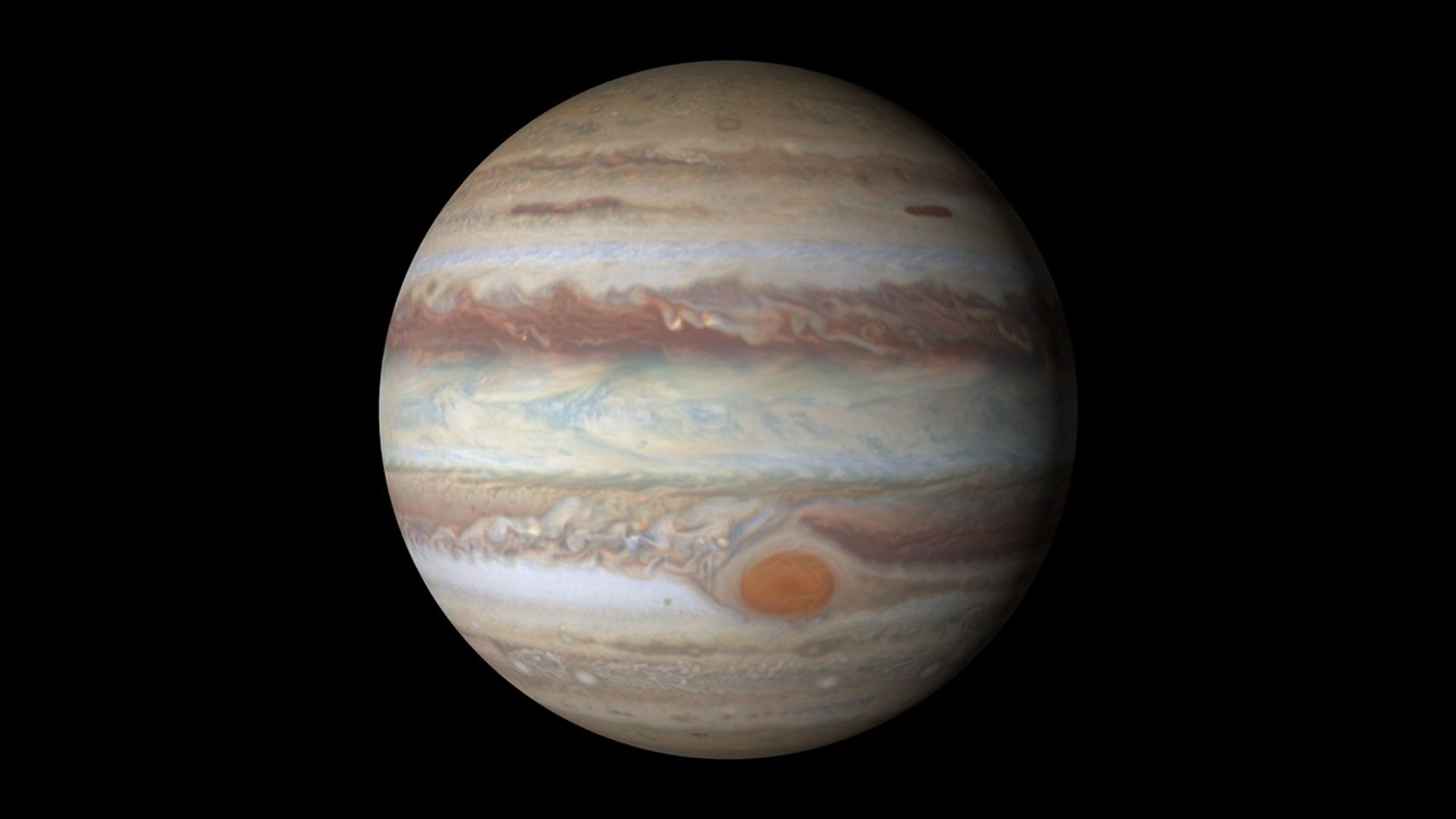
Jupiter Global Map from Hubble OPAL Data (Animated Sequence 2)
Scientists have produced new maps of Jupiter using the Wide Field Camera 3 on NASA's Hubble Space Telescope. The data in the Jupiter map shown here were taken during Hubble Outer Planet Atmospheres Legacy program observations of Jupiter on Jan. 19, 2015, from 15:00 UT to 23:40...
Share
Details
Claire Andreoli
NASA’s Goddard Space Flight Center
Greenbelt, Maryland
claire.andreoli@nasa.gov










